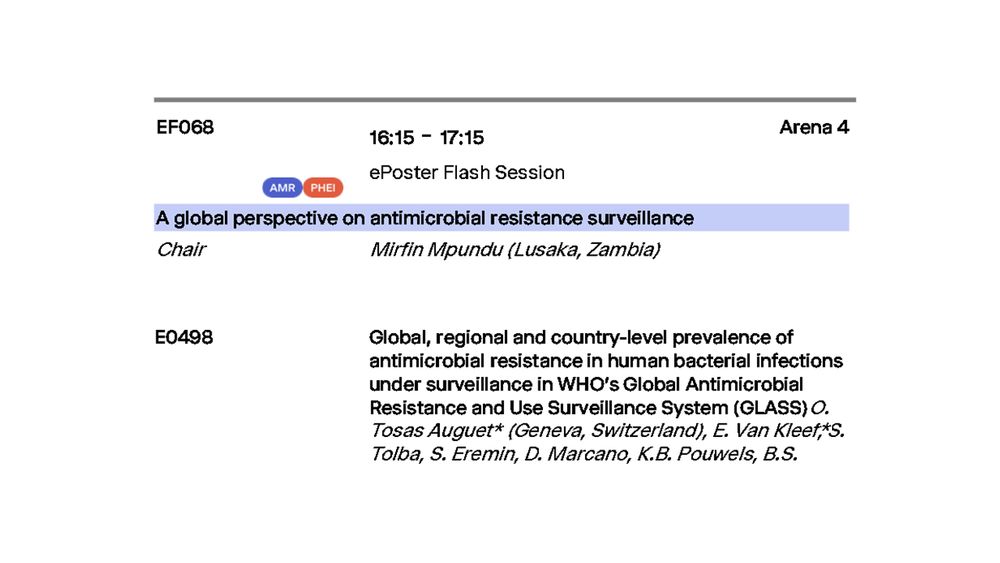Esther van Kleef
@esthervk.bsky.social
690 followers
370 following
25 posts
Infectious disease epidemiologists working on AMR, modelling and ID surveillance @WHO and UoOxford. Alone we move fast, together we move mountains
Posts
Media
Videos
Starter Packs
Reposted by Esther van Kleef
Esther van Kleef
@esthervk.bsky.social
· Apr 29

Global Antimicrobial Resistance and Use Surveillance System (GLASS) report: antibiotic use data for 2022
This Global Antimicrobial Resistance and Use Surveillance System (GLASS) report describes global progress in GLASS-AMU surveillance and antibiotic use in 2022, reported by 60 countries. It supplements...
www.who.int
Esther van Kleef
@esthervk.bsky.social
· Apr 29
Esther van Kleef
@esthervk.bsky.social
· Apr 29
Esther van Kleef
@esthervk.bsky.social
· Apr 29
Esther van Kleef
@esthervk.bsky.social
· Apr 15
Esther van Kleef
@esthervk.bsky.social
· Apr 15
Esther van Kleef
@esthervk.bsky.social
· Apr 15
Esther van Kleef
@esthervk.bsky.social
· Mar 28
Esther van Kleef
@esthervk.bsky.social
· Mar 28
Esther van Kleef
@esthervk.bsky.social
· Mar 28
Esther van Kleef
@esthervk.bsky.social
· Mar 28
Esther van Kleef
@esthervk.bsky.social
· Mar 28
Reposted by Esther van Kleef
Charles Ghoul-ba ✡️
@charlesgaba.com
· Feb 2

In which I provide links to archived versions of every CDC.gov page available pre-purge (Part 1 of 15)
As horrific as it is that the Trump/Musk Administration is purging data from federal websites, it's good to know that the Internet Archive has been archiving much of it. However, in addition to the Ar...
acasignups.net
Esther van Kleef
@esthervk.bsky.social
· Feb 25
Esther van Kleef
@esthervk.bsky.social
· Feb 18









